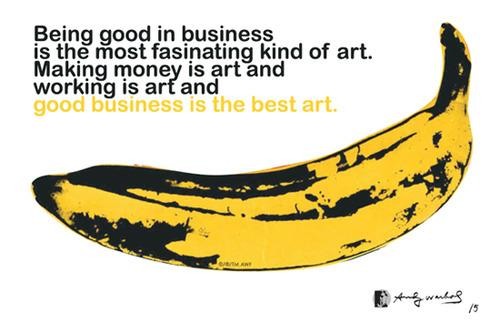Andy Warhol has surpassed Picasso as the highest selling artist in auction for 2014. Warhol remains the an art market powerhouse, whose work consistently brings in more money through auction than any other artist. Christopher Gaillard, the president of the art consultant group Gurr John, cites Andy Warhol as the “most powerful contemporary-art brand that exists.” Owning a Warhol, he claims, is “about sheer, instant recognition and…a sense of wealth, glamour and power” that comes along with owning an original Andy Warhol work of art. Since the Great Recession of 2008-2009, the art market has more than doubled, with Warhol securing his spot as one of the art market’s key players. In 2014 alone, the Pop artist broke records with two of the highest priced works sold at auction after his Four Marlons sold for $69.6M alongside his Triple Elvis, sold for $81.9M. Warhol’s most expensive artwork to date is his Silver Car Crash (Double Disaster), which sold in 2013 for a staggering $105M, breaking the record set by the $71.7M sales of his Green Car Crash.
To put these numbers in perspective, in 2011, the prestigious Renaissance artist, Titian, realized his highest auction price ever, with the $16.9M sales of his Madonna and Child painting. In 2008, Warhol’s Eight Elvises broke barriers and sold for $100M– as Intelligent Life Magazine’s Bryan Appleyard puts it, “the market says that Warhol is five times better” than an old master like Titian, a truly impressive feat. Jeff Rabin, principal at advisory firm Artvest Partners, characterizes the most sought-after artists as those who have “an incredible body of work and multiple periods of exceptional work.” This is why Warhol’s body of work, comprised largely of screenprints and multiples, is not devalued because of its extensive count– rather, it increases. In fact, Warhol was the top selling artist of 2014, beating the likes of art market big leaguers, Pablo Picasso (who came in second) and Francis Bacon.
Initially, the resurgence of interest in the art market stemmed from abroad, but now it “is coming from everywhere,” according to Christie’s Head of Evening Sales, Sara Friedlander. Christie’s Brooke Lampley, credits this rise to the stability of the market, stating that people “are clearly comfortable with the fact that it’s a strong market and are taking advantage of that opportunity.” Friedlander even calls the present state of the market “a major moment of masterpiece buying.” Christie’s total sale of $852.9M for a modest 75 contemporary pieces supports these claims in favor of art investment. As Appleyard affirms: “nothing bounce[s] out of a recession quite like a Warhol.”
Research indicates that this is not a trend that will die out quickly. According to Christie’s Sara Friedlander, “the fixed supply and intrinsic essence of art is what drives the prices up over time, making it a worthy investment.” Appleyard even refers to Warhol as “the art market’s one-man Dow Jones,” a testament to Warhol’s ever-increasing value. Georgina Adam of Art Newspaper calls Warhol the American Picasso, “a man for all seasons” whose work is coveted due to its easily recognizable, elegant, and epochal iconography. Gaillard accurately sums up the Pop star’s seemingly everlasting success: “Warhol is a global commodity now…the backbone of any auction of post-war contemporary art…the great moneymaker.”


